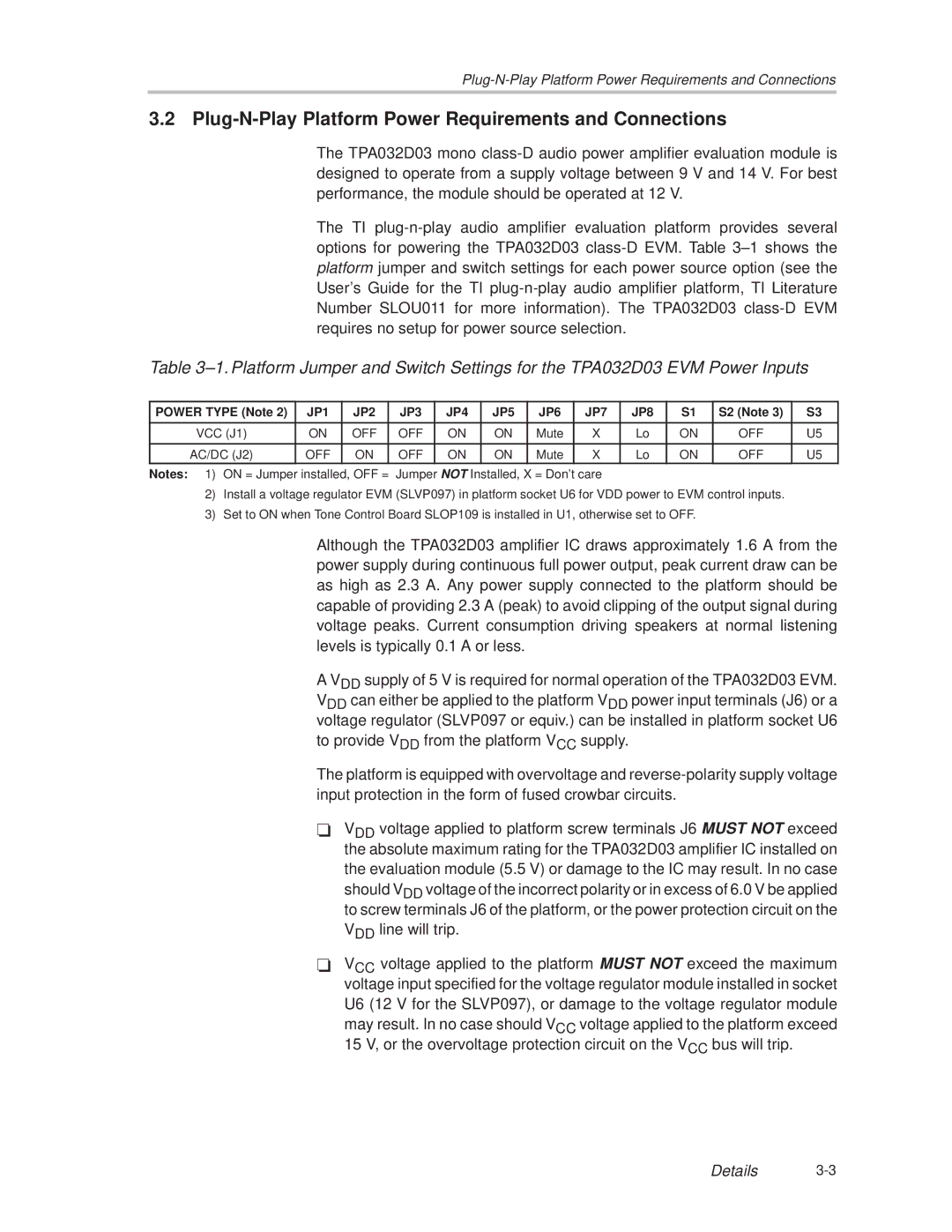SLOU082 specifications
Texas Instruments SLOU082 is a technical document primarily focused on the TPS7A47 device, which is an enhanced, low-noise linear voltage regulator designed for world-class performance in sensitive analog applications. This document explains the features, technologies, and characteristics that set the TPS7A47 apart in the industry.One of the main features of the TPS7A47 is its ultra-low output noise, boasting a remarkable specification of just 1.2 μVRMS across a bandwidth of 10 Hz to 100 kHz. This characteristic makes it an ideal choice for high-precision, low-noise applications such as RF and audio signal processing, where minimizing noise is crucial for system performance. Additionally, the device offers a wide output voltage range from 1.4 V to 20 V, providing flexibility in various applications.
The TPS7A47 operates with a maximum output current of 1 A, enabling it to support multiple loads efficiently. Its dropout voltage is impressively low, particularly at light load conditions, ensuring high-efficiency performance in battery-powered applications. This aspect significantly extends battery life, making it suitable for portable devices.
Another highlight is the PowerPAD package offered for the TPS7A47, which enhances thermal performance and simplifies PCB design. The integration of thermal protection ensures the regulator operates safely under various conditions, preventing potential damage due to overheating.
The TPS7A47 also includes features such as reverse current protection, which prevents current from flowing back into the input when the output voltage exceeds the input voltage. This feature enhances reliability and extends the longevity of the device in various circuit configurations.
In terms of control, the TPS7A47 utilizes a low-dropout architecture, ensuring steady voltage regulation with minimal input-to-output voltage differential. It also supports a wide range of capacitor types, which allows for flexibility in component selection in layout design.
Overall, the Texas Instruments SLOU082 document on the TPS7A47 provides detailed insights into one of the most effective voltage regulation solutions available today. With exceptional noise performance, a versatile voltage range, robust thermal management, and reliability characteristics, the TPS7A47 is an exemplary choice for engineers and designers aiming to achieve high-performance analog systems.

